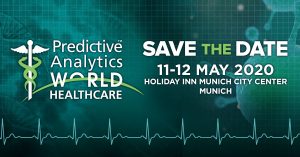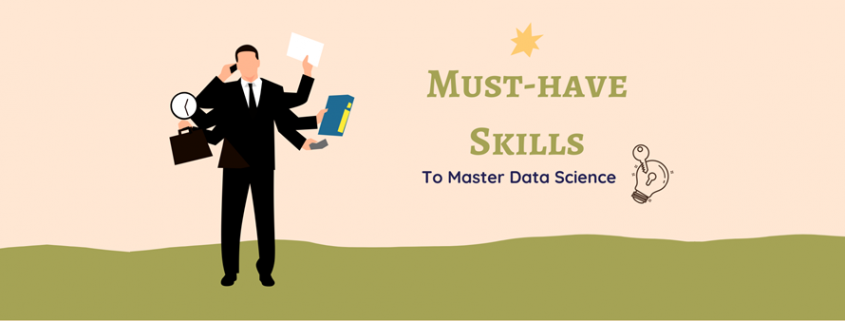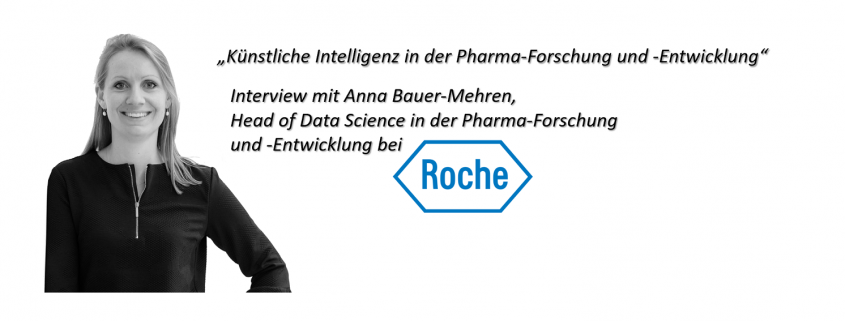Interview mit Anna Bauer-Mehren, Head of Data Science in der Pharma-Forschung und -Entwicklung bei Roche in Penzberg
Frau Dr. Bauer-Mehren ist Head of Data Science im Bereich Pharma-Forschung und -Entwicklung bei Roche in Penzberg. Sie studierte Bioinformatik an der LMU München und schloss ihre Promotion im Bereich Biomedizin an der Pompeu Fabra Universität im Jahr 2010 in Spanien ab. Heute befasst sie sich mit dem Einsatz von Data Science zur Verbesserung der medizinischen Produkte und Prozesse bei Roche. Ferner ist sie Speaker der Predictive Analytics World Healthcare (Virtual Conference, Mai 2020).
Data Science Blog: Frau Bauer-Mehren, welcher Weg hat Sie bis an die Analytics-Spitze bei Roche geführt?
Ehrlich gesagt bin ich eher zufällig zum Thema Data Science gekommen. In der Schule fand ich immer die naturwissenschaftlich-mathematischen Fächer besonders interessant. Deshalb wollte ich eigentlich Mathematik studieren. Aber dann wurde in München, wo ich aufgewachsen und zur Schule gegangen bin, ein neuer Studiengang eingeführt: Bioinformatik. Diese Kombination aus Biologie und Informatik hat mich so gereizt, dass ich die Idee des Mathe-Studiums verworfen habe. Im Bioinformatik-Studium ging es unter anderem um Sequenzanalysen, etwa von Gen- oder Protein-Sequenzen, und um Machine Learning. Nach dem Masterabschluss habe ich an der Universitat Pompeu Fabra in Barcelona in biomedizinischer Informatik promoviert. In meiner Doktorarbeit und auch danach als Postdoktorandin an der Stanford School of Medicine habe ich mich mit dem Thema elektronische Patientenakten beschäftigt. An beiden Auslandsstationen kam ich auch immer wieder in Berührung mit Themen aus dem Pharma-Bereich. Bei meiner Rückkehr nach Deutschland hatte ich die Pharmaforschung als Perspektive für meine berufliche Zukunft fest im Blick. Somit kam ich zu Roche und leite seit 2014 die Abteilung Data Science in der Pharma-Forschung und -Entwicklung.
Data Science Blog: Was sind die Kernfunktionen der Data Science in Ihrem Bereich der Pharma-Forschung und -Entwicklung?
Ich bin Abteilungsleiterin für Data Science von pREDi (Pharma Research and Early Development Informatics), also von Roches Pharma-Forschungsinformatik. Dieser Bereich betreut alle Schritte von der Erhebung der Daten bis zur Auswertung und unterstützt alle Forschungsgebiete von Roche, von den Neurowissenschaften und der Onkologie bis hin zu unseren Biologie- und Chemielaboren, die die Medikamente herstellen. Meine Abteilung ist für die Auswertung der Daten zuständig. Wir beschäftigen uns damit, Daten so aufzubereiten und auszuwerten, dass daraus neue Erkenntnisse für die Erforschung und Entwicklung sowie die Optimierung von pharmazeutischen Produkten und Therapien gewonnen werden könnten. Das heißt, wir wollen die Daten verstehen, interpretieren und zum Beispiel einen Biomarker finden, der erklärt, warum manche Patienten auf ein Medikament ansprechen und andere nicht.
Data Science Blog: Die Pharmaindustrie arbeitet schon seit Jahrzehnten mit Daten z. B. über Diagnosen, Medikationen und Komplikationen. Was verbessert sich hier gerade und welche Innovationen geschehen hier?
Für die medizinische Forschung ist die Qualität der Daten sehr wichtig. Wenn ein Medikament entwickelt wird, fallen sehr große Datenmengen an. Früher hat niemand dafür gesorgt, dass diese Daten so strukturiert und aufbereitet werden, dass sie später auch in der Forschung oder bei der Entwicklung anderer Medikamente genutzt werden können. Es gab noch kein Bewusstsein dafür, dass die Daten auch über den eigentlichen Zweck ihrer Erhebung hinaus wertvoll sein könnten. Das hat sich mittlerweile deutlich verbessert, auch dank des Bereichs Data Science. Heute ist es normal, die eigenen Daten „FAIR“ zu machen. Das Akronym FAIR steht für findable, accessible, interoperable und reusable. Das heißt, dass man die Daten so sauber managen muss, dass Forscher oder andere Entwickler sie leicht finden, und dass diese, wenn sie die Berechtigung dafür haben, auch wirklich auf die Daten zugreifen können. Außerdem müssen Daten aus unterschiedlichen Quellen zusammengebracht werden können. Und man muss die Daten auch wiederverwenden können.
Data Science Blog: Was sind die Top-Anwendungsfälle, die Sie gerade umsetzen oder für die Zukunft anstreben?
Ein Beispiel, an dem wir zurzeit viel forschen, ist der Versuch, so genannte Kontrollarme in klinischen Studien zu erstellen. In einer klinischen Studie arbeitet man ja immer mit zwei Patientengruppen: Eine Gruppe der Patienten bekommt das Medikament, das getestet werden soll, während die anderen Gruppe, die Kontrollgruppe, beispielsweise ein Placebo oder eine Standardtherapie erhält. Und dann wird natürlich verglichen, welche der zwei Gruppen besser auf die Therapie anspricht, welche Nebenwirkungen auftreten usw. Wenn wir jetzt in der Lage wären, diesen Vergleich anhand von schon vorhanden Patientendaten durchzuführen, quasi mit virtuellen Patienten, dann würden wir uns die Kontrollgruppe bzw. einen Teil der Kontrollgruppe sparen. Wir sprechen hierbei auch von virtuellen oder externen Kontrollarmen. Außerdem würden wir dadurch auch Zeit und Kosten sparen: Neue Medikamente könnten schneller entwickelt und zugelassen werden, und somit den ganzen anderen Patienten mit dieser speziellen Krankheit viel schneller helfen.
Data Science Blog: Mit welchen analytischen Methoden arbeiten Sie und welche Tools stehen dabei im Fokus?
Auch wir arbeiten mit den gängigen Programmiersprachen und Frameworks. Die meisten Data Scientists bevorzugen R und/oder Python, viele verwenden PyTorch oder auch TensorFlow neben anderen. Generell nutzen wir durchaus viel open-source, lizenzieren aber natürlich auch Lösungen ein. Je nachdem um welche Fragestellungen es sich handelt, nutzen wir eher statistische Modelle- Wir haben aber auch einige Machine Learning und Deep Learning use cases und befassen uns jetzt auch stark mit der Operationalisierung von diesen Modellen. Auch Visualisierung ist sehr wichtig, da wir die Ergebnisse und Modelle ja mit Forschern teilen, um die richtigen Entscheidungen für die Forschung und Entwicklung zu treffen. Hier nutzen wir z.B. auch RShiny oder Spotfire.
Data Science Blog: Was sind Ihre größten Herausforderungen dabei?
In Deutschland ist die Nutzung von Patientendaten noch besonders schwierig, da die Daten hier, anders als beispielsweise in den USA, dem Patienten gehören. Hier müssen erst noch die notwendigen politischen und rechtlichen Rahmenbedingungen geschaffen werden. Das Konzept der individualisierten Medizin funktioniert aber nur auf Basis von großen Datenmengen. Aktuell müssen wir uns also noch um die Fragen kümmern, wo wir die Datenmengen, die wir benötigen, überhaupt herbekommen. Leider sind die Daten von Patienten, ihren Behandlungsverläufen etc. in Deutschland oft noch nicht einmal digitalisiert. Zudem sind die Daten meist fragmentiert und auch in den kommenden Jahren wird uns sicherlich noch die Frage beschäftigen, wie wir die Daten so sinnvoll erheben und sammeln können, dass wir sie auch integrieren können. Es gibt Patientendaten, die nur der Arzt erhebt. Dann gibt es vielleicht noch Daten von Fitnessarmbändern oder Smartphones, die auch nützlich wären. Das heißt, dass wir aktuell, auch intern, noch vor der Herausforderung stehen, dass wir die Daten, die wir in unseren klinischen Studien erheben, nicht ganz so einfach mit den restlichen Datenmengen zusammenbringen können – Stichwort FAIRification. Zudem reicht es nicht nur, Daten zu besitzen oder Zugriff auf Daten zu haben, auch die Datenqualität und -organisation sind entscheidend. Ich denke, es ist sehr wichtig, genau zu verstehen, um was für Daten es sich handelt, wie diese Erhoben wurden und welche (wissenschaftliche) Frage ich mit den Daten beantworten möchte. Ein gutes Verständnis der Biologie bzw. Medizin und der dazugehörigen Daten sind also für uns genauso wichtig wie das Verständnis von Methoden des Machine Learning oder der Statistik.
Data Science Blog: Wie gehen Sie dieses Problem an? Arbeiten Sie hier mit dedizierten Data Engineers? Binden Sie Ihre Partner ein, die über Daten verfügen? Freuen Sie sich auf die Vorhaben der Digitalisierung wie der digitalen Patientenakte?
Roche hat vor ein paar Jahren die Firma Flatiron aus den USA übernommen. Diese Firma bereitet Patientendaten zum Beispiel aus der Onkologie für Krankenhäuser und andere Einrichtungen digital auf und stellt sie für unsere Forschung – natürlich in anonymisierter Form – zur Verfügung. Das ist möglich, weil in den USA die Daten nicht den Patienten gehören, sondern dem, der sie erhebt und verwaltet. Zudem schaut Roche auch in anderen Ländern, welche patientenbezogenen Daten verfügbar sind und sucht dort nach Partnerschaften. In Deutschland ist der Schritt zur elektronischen Patientenakte (ePA) sicherlich der richtige, wenn auch etwas spät im internationalen Vergleich. Dennoch sind die Bestrebungen richtig und ich erlebe auch in Deutschland immer mehr Offenheit für eine Wiederverwendung der Daten, um die Forschung voranzutreiben und die Patientenversorgung zu verbessern.
Data Science Blog: Sollten wir Deutsche uns beim Datenschutz lockern, um bessere medizinische Diagnosen und Behandlungen zu erhalten? Was wäre Ihr Kompromiss-Vorschlag?
Generell finde ich Datenschutz sehr wichtig und erachte unser Datenschutzgesetz in Deutschland als sehr sinnvoll. Ich versuche aber tatsächlich auf Veranstaltungen und bei anderen Gelegenheiten Vertreter der Politik und der Krankenkassen immer wieder darauf aufmerksam zu machen, wie wichtig und wertvoll für die Gesellschaft eine Nutzung der Versorgungsdaten in der Pharmaforschung wäre. Aber bei der Lösung der Problematik kommen wir in Deutschland nur sehr langsam voran. Ich sehe es kritisch, dass viel um dieses Thema diskutiert wird und nicht einfach mal Modelle ausprobiert werden. Wenn man die Patienten fragen würde, ob sie ihre Daten für die Forschung zur Verfügung stellen möchte, würden ganz viele zustimmen. Diese Bereitschaft vorher abzufragen, wäre technisch auch möglich. Ich würde mir wünschen, dass man in kleinen Pilotprojekten mal schaut, wie wir hier mit unserem Datenschutzgesetz zu einer ähnlichen Lösung wie beispielsweise Flatiron in den USA kommen können. Ich denke auch, dass wir mehr und mehr solcher Pilotprojekte sehen werden.
Data Science Blog: Gehört die Zukunft weiterhin den Data Scientists oder eher den selbstlernenden Tools, die Analysen automatisiert für die Produkt- oder Prozessverbesserung entwickeln und durchführen?
In Bezug auf Künstliche Intelligenz (KI) gibt es ein interessantes Sprichwort: Garbage in, Garbage out. Wenn ich also keine hochqualitativen Daten in ein Machine Learning Modell reinstecke, dann wird höchstwahrscheinlich auch nichts qualitativ Hochwertiges rauskommen. Das ist immer die Illusion, die beim Gedanken an KI entsteht: Ich lass einfach mal die KI über diesen Datenwust laufen und dann wird die gute Muster erkennen und wird mir sagen, was funktioniert. Das ist aber nicht so. Ich brauche schon gute Daten, ich muss die Daten gut organisieren und gut verstehen, damit meine KI wirklich etwas Sinnvolles berechnen kann. Es reichen eben nicht irgendwelche Daten, sondern die Daten müssen auch eine hohe Qualität haben, da sie sich sonst nicht integrieren und damit auch nicht interpretieren lassen. Dennoch arbeiten wir auch mit der Vision “Data Science” daran, immer mehr zu demokratisieren, d.h. es möglichst vielen Forschern zu ermöglichen, die Daten selbst auszuwerten, oder eben gewisse Prozessschritte in der Forschung durch KI zu ersetzen. Auch hierbei ist es wichtig, genau zu verstehen, was in welchem Bereich möglich ist. Und wieder denke ich, dass die richtige Erfassung/Qualität der Daten auch hier das A und O ist und dennoch oft unterschätzt wird.
Data Science Blog: Welches Wissen und welche Erfahrung setzen Sie für Ihre Data Scientists voraus? Und nach welchen Kriterien stellen Sie Data Science Teams für Ihre Projekte zusammen?
Generell sucht Roche als Healthcare-Unternehmen Bewerber mit einem Hintergrund in Informatik und Life Sciences zum Beispiel über ein Nebenfach oder einen Studiengang wie Biotechnologie oder Bioinformatik. Das ist deswegen wichtig, weil man bei Roche in allen Projekten mit Medizinern, Biologen oder Chemikern zusammenarbeitet, deren Sprache und Prozesse man verstehen sollte. Immer wichtiger werden zudem Experten für Big Data, Datenanalyse, Machine Learning, Robotics, Automatisierung und Digitalisierung.
Data Science Blog: Für alle Studenten, die demnächst ihren Bachelor, beispielsweise in Informatik, Mathematik oder auch der Biologie, abgeschlossen haben, was würden sie diesen jungen Damen und Herren raten, wie sie einen guten Einstieg ins Data Science bewältigen können?
Generell empfehle ich jungen Absolventen herauszufinden für welchen Bereich ihr Herz schlägt: Interessiere ich mich dafür, tief in die Biologie einzusteigen und grundlegende Prozesse zu verstehen? Möchte ich nahe am Patienten sei? Ooder ist mir wichtiger, dass ich auf möglichst große Datenmengen zugreifen kann? Je nachdem, kann ich als Einstieg durchaus Traineeprogramme empfehlen, die es ermöglichen, in mehrere Abteilungen einer Firma Einblicke zu bekommen, oder würde eher eine Promotion empfehlen. Ich denke, das lässt sich eben nicht pauschalisieren. Für die Arbeit bei Roche ist sicherlich entscheidend, dass ich mich neben der Informatik/Data Science auch für das Thema Medizin und Biologie interessiere. Nur dann kann ich in den interdisziplinären Teams einen wertvollen Beitrag leisten und gleichzeitig auch meiner Leidenschaft folgen. Ich denke, dass das auch in anderen Branchen ähnlich ist.
 Frau Bauer-Mehren ist Speaker der Predictive Analytics World Healthcare zum Thema Unlocking the Potential of FAIR Data Using AI at Roche.
Frau Bauer-Mehren ist Speaker der Predictive Analytics World Healthcare zum Thema Unlocking the Potential of FAIR Data Using AI at Roche.
The Predictive Analytics World Healthcare is the premier machine learning conference for the Healthcare Industry. Due to the corona virus crisis, this conference will be a virtual edition from 11 to 12 MAY 2020.













